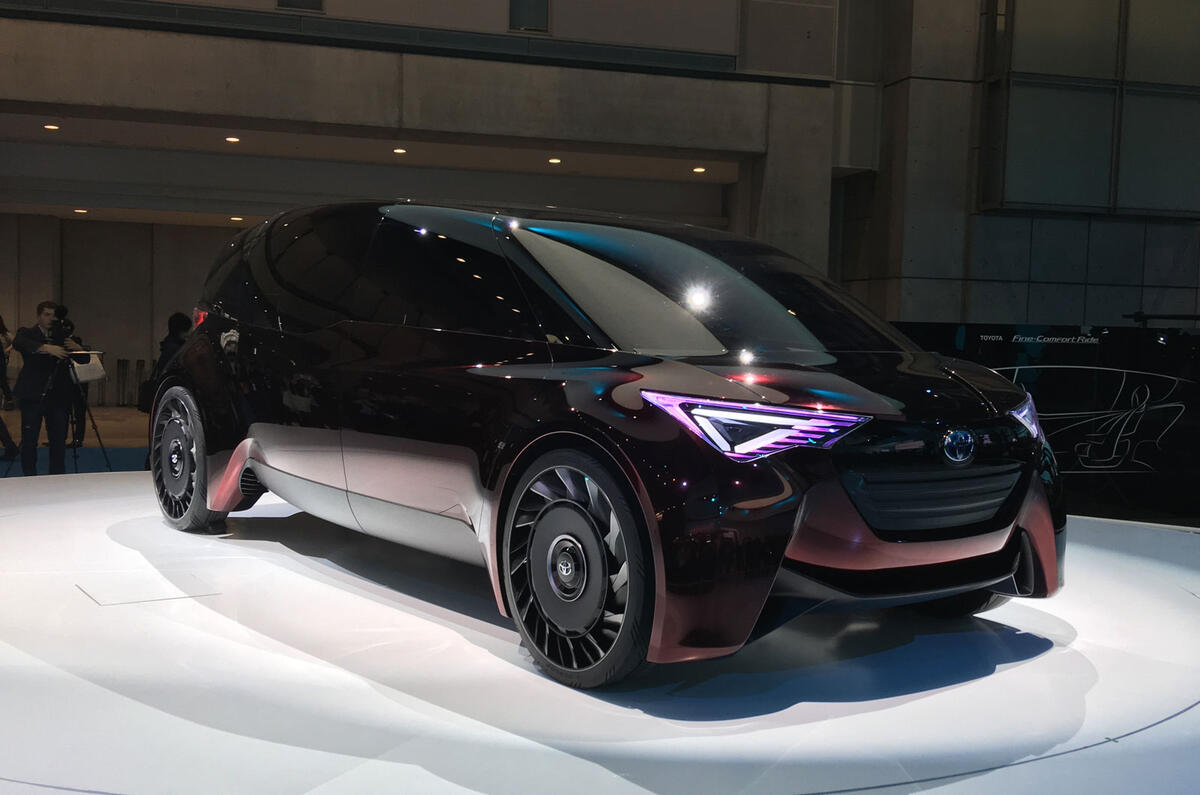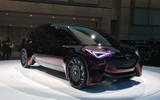Toyota’s Fine-Comfort Ride concept is a showcase for the firm’s next-generation hydrogen fuel cell technology, R&D chiefs revealed at the Tokyo motor show.
Although officials declined to reveal specifics, they did confirm the next-gen fuel cell is smaller, lighter, more efficient and cheaper than that found in the only Toyota production car featuring the technology today, the Mirai. Kiyotaka Ise head of advanced R&D for Toyota said he wanted to reduce costs and improve performance by around 50% with every new generation powertrain.
“If you look at the jump from first generation hybrid to second that is what we achieved - and that is our target again for 2020,” he said. “We want to reduce the amount of platinum, for instance, and increase the sales volume - for cost reduction, they are two of the biggest goals.”
Toyota makes a significant loss on every sale of the Mirai, when development costs are factored in.
The smaller powertrain has allowed Toyota to push the cabin dimensions across the full length and width of the Fine-Comfort Ride with the wheels close to each corner each containing an electric motor. No details of how the wheels will drive the car have been announced. At its widest, the Fine-Comfort Ride is around two metres in width - around 11cm more than the Mercedes-Benz S-Class. Despite its name the Fine-Comfort Ride uses a conventional suspension arrangement, with engineers saying that the comfort benefits come from the powertrain and in-wheel electric motor arrangement.
The Fine-Comfort Ride’s body is shaped to be aerodynamically efficient and it runs with a unique cover along its underside to dampen any noise from the road or tyres. On the Japanese test cycle, the car is said by Toyota to have a range of 620 miles (1000km) between refills, from a 6kg capacity tank.
Inside, as the car’s name suggests, the focus is on comfort. The seats can be adjusted according to posture (including a fully reclined sleeping position), the numerous digital displays and projection screens are built around occupants and the seat layout can be altered to aid conversation or create personal spaces. Notably, the rearmost seats are in a sofa-like bench configuration, while the front two rows are made up of individual seats.
Although Toyota chiefs have refused to confirm the Fine-Comfort Ride has been designed with autonomous driving functions in mind, the ability for front seat passengers to swing their seats round and talk to rear-seat occupants suggests this is likely.




























Join the debate
Add your comment
Why not run more UFO stories
As they're more likely to reach production. Afterall the only difference between the two being UFO's will cost less and are more practical.
Wonder who's going to drop Hydrogen first Toyota or Honda?
MMMMMmmmmmmmm...
Cushy!
Hydrogen is going to be the game changer, no doubt about it.
No S class
This doesn't look like an S-Class rival to me, but it does look great. Reminds me of the Renault Avantime, which I also loved the styling of.
I know that this is just a concept design, but those seats remind me of my dentist's chair.
Scoobman wrote:
The style, proportions, certainly have something of the Avantime about them.
Rather than S-Class, it seems to be more of an R-Class competitor. That is a market niche I think M-B will be happy to stay away from.
A shame. I liked the R-Class.